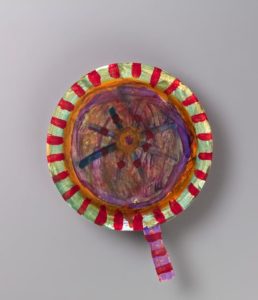Student Contributor: E. Holmes
 Teacher asks questions and student will be given a paddle to raise if it relates to them. Students will be able to see what they have in common with their peers. This strategy can be used as an ice breaker to build connections.
Teacher asks questions and student will be given a paddle to raise if it relates to them. Students will be able to see what they have in common with their peers. This strategy can be used as an ice breaker to build connections.
The teacher can ask questions involving traits, such as hair color or freckles, to start off with. This will cause them to acknowledge other students in the classroom. Then, the teacher can ask questions on pets, siblings, favorites, and any other kid-related questions. When students raise their paddles, they can look around the classroom and hopefully make connections with other students. The paddle used in this strategy can be given to the students or made by the students. Students will be able to relate to each other with what they have in common. Make sure to give students a few seconds to look around. The purpose this strategy is to be used as an ice breaker at the beginning of the school year.
 This tool belongs in the Preventative phase due to it being meant as a community building game. Students who may not know each other yet can build relationships off of this activity. Hopefully, later on in the school year, students will know these facts about each other. If this is the case, then there is no need for this tool in the Supportive or Corrective phase. For Theories of Influence, I suppose the strategy itself is Teacher-directed due to the teacher asking the questions. However, because the game is designed to build a community in the classroom, it fits best with Student-directed. This tool is allowing students to establish connections and get a sense of what their new community is like. I added the Collaborative theory due to the teacher also being part of the community. The teacher is asking the questions while the students are participating in the activity. The teacher is also allowed to answer the questions. If you wanted to have this activity more Student-directed, you could have the students play along and think of questions to ask.
This tool belongs in the Preventative phase due to it being meant as a community building game. Students who may not know each other yet can build relationships off of this activity. Hopefully, later on in the school year, students will know these facts about each other. If this is the case, then there is no need for this tool in the Supportive or Corrective phase. For Theories of Influence, I suppose the strategy itself is Teacher-directed due to the teacher asking the questions. However, because the game is designed to build a community in the classroom, it fits best with Student-directed. This tool is allowing students to establish connections and get a sense of what their new community is like. I added the Collaborative theory due to the teacher also being part of the community. The teacher is asking the questions while the students are participating in the activity. The teacher is also allowed to answer the questions. If you wanted to have this activity more Student-directed, you could have the students play along and think of questions to ask.
More Information –
Tool Source: This idea came from a website with 20 team-building games. https://www.weareteachers.com


